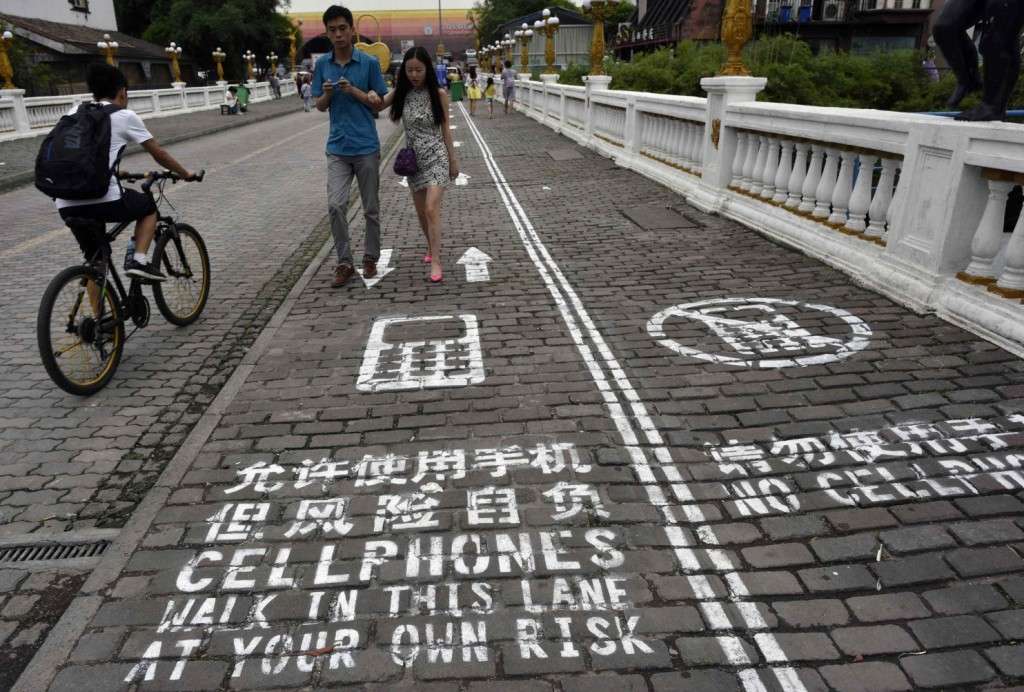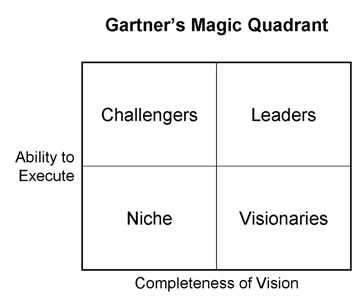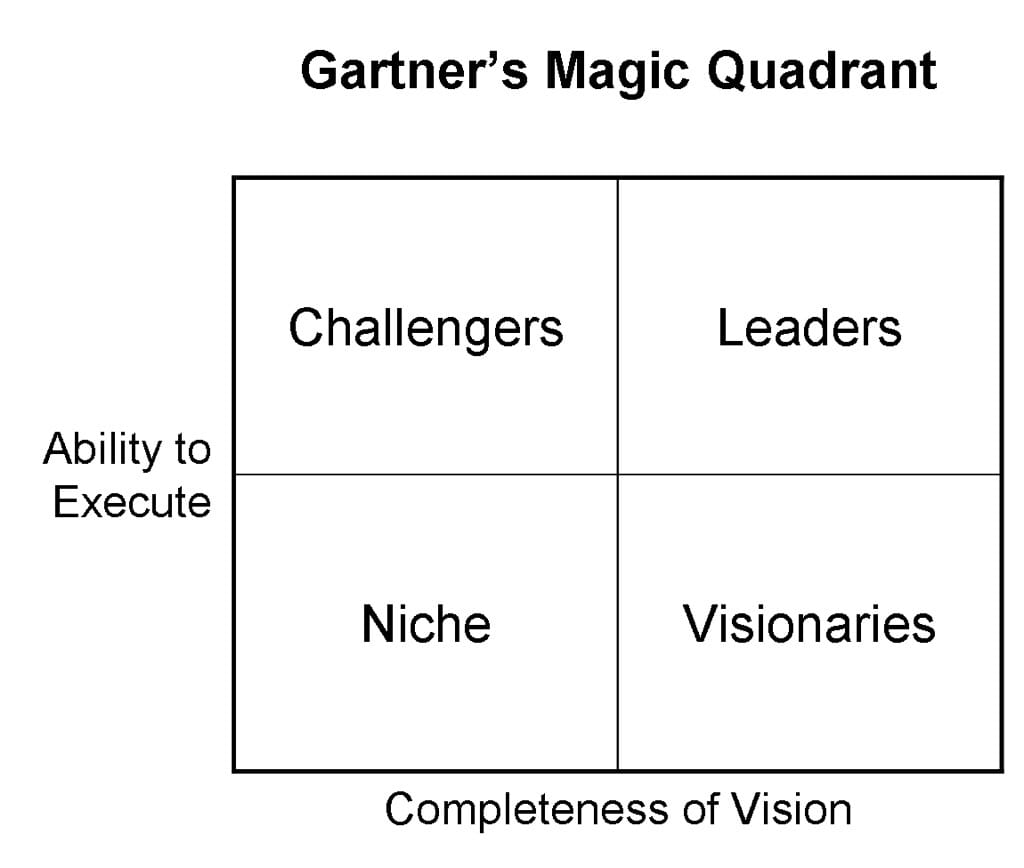by Adam L Stanley | Jul 2, 2015 | Technology
Real Estate Technology: Riding a wave of change
 Kodak missed a tipping point and went bankrupt. Blockbuster Video fought the wrong enemy and went bankrupt. Taxi drivers, hotels, travel agencies, and so many other industries are now fighting less against themselves than against new entrants that actually seek to solve a problem, to fill a need, to change old norms. Perhaps more so than most of these industries, the commercial real estate industry has been slow to both recognize and embrace change. I am convinced messenger service companies remain in business solely because the CRE industry continues to mistrust the transmittal of critical documents to anyone or anything not human!
Kodak missed a tipping point and went bankrupt. Blockbuster Video fought the wrong enemy and went bankrupt. Taxi drivers, hotels, travel agencies, and so many other industries are now fighting less against themselves than against new entrants that actually seek to solve a problem, to fill a need, to change old norms. Perhaps more so than most of these industries, the commercial real estate industry has been slow to both recognize and embrace change. I am convinced messenger service companies remain in business solely because the CRE industry continues to mistrust the transmittal of critical documents to anyone or anything not human!
But that is changing, and it is changing fast. The next big thing for our industry, if we are not careful, will happen without the industry’s current players. And the industry is finally waking up. The influx of tech-dependent Millennials into the workforce, combined with increasing pressure to streamline communication and access to information, has made inroads into the business practices of even old-school brokers and traditional owners and investors. They have begun to recognize the importance of innovation beyond just the in-house research listings database and better presentation tools to both new business development and current client service.
As a result, attention (and, therefore, funds) devoted to technology for commercial real estate have skyrocketed. Company-sponsored competitions between internal groups complement existing IT resources in the quest for innovative ideas, while former real estate professionals, now tech innovators, are filling known informational and service gaps with external all-in-one marketing, database or analytics platforms, digital mapping and other architectural applications, and automated building management systems. Beyond that, we are finding more players from outside of the industry finding ways their tools and technology solutions can meet our needs. And much of the activity is being driven by incubators and accelerators like 1871 in Chicago, MetaProp in New York, and new players like Motives in Dallas.
I use this space to talk about leadership and trends in technology. I will talk more specifically about real estate technology over the next few months and will likely have guest bloggers from a few startups as well.
Thanks for continuing to connect with me.
Other related blog posts:
Thinking Like Our Ancestors
Excerpt: At the end of the day, perhaps disruption is a lot more simple than we make it seem at these mega conferences like OpenWorld. Perhaps disruption is simply a relentless focus on consumers: your clients, employees and investors. Dream every night of how you can better meet their needs and there is no way you can NOT disrupt your industry. Perhaps the only way you will get left behind is if you leave your consumers behind. Perhaps disruption is simply about a return to the past.
Facebook, Snapchat, and the new new thing
Excerpt: The bottom line is I don’t necessarily believe the Facebook is in its final days. I do believe, however, the company must drastically rethink their strategy and consider alternatives for growth in the United States. If they truly believe that growth in other markets will counter dramatic drops in USA, I believe that is misguided. Other markets will eventually follow the same path of the United States. Younger users will leave; older users will join the platform at a much lower level of engagement; upstarts will create the next next big thing and advertisers will be tempted away.
Innovations Changing Our Industry
Excerpt: In the interview, I discuss the rapid pace of technological changes in commercial real estate; the use of virtual reality for viewing property; DTZ’s use of analytics to help clients make smarter decisions; as well as the future potential for drones and the Internet of Things.
Be Well. Lead On.
Adam

Adam L. Stanley Connections Blog
Technology. Leadership. Food. Life.
AdamLStanley.com
Follow me on Twitter | Connect with me on Linked In | “Like” me on Facebook
by Adam L Stanley | Jun 19, 2015 | Technology
My interview on Technological Innovations and CRE
Realcomm/IBcon 2015 Conference in San Antonio, TX
In the interview, I discuss the rapid pace of technological changes in commercial real estate; the use of virtual reality for viewing property; DTZ’s use of analytics to help clients make smarter decisions; as well as the future potential for drones and the Internet of Things. I am NOT a corporate IT leader, which is why I prefer calling myself a Technology Evangelist. While I am proud of the great work we do strengthening the foundation elements that make our business more effective, first and foremost I work for our clients and focus on how we can bring innovation to them. Technology truly is changing, rather disrupting, our industry. It is both fun and frightening to watch how fast it is happening but I am glad to be a part of it.
Other related blog posts:
“Thinking Like Our Ancestors”
Excerpt: At the end of the day, perhaps disruption is a lot more simple than we make it seem at these mega conferences like OpenWorld. Perhaps disruption is simply a relentless focus on consumers: your clients, employees and investors. Dream every night of how you can better meet their needs and there is no way you can NOT disrupt your industry. Perhaps the only way you will get left behind is if you leave your consumers behind. Perhaps disruption is simply about a return to the past.
Facebook, Snapchat, and the new new thing
The bottom line is I don’t necessarily believe the Facebook is in its final days. I do believe, however, the company must drastically rethink their strategy and consider alternatives for growth in the United States. If they truly believe that growth in other markets will counter dramatic drops in USA, I believe that is misguided. Other markets will eventually follow the same path of the United States. Younger users will leave; older users will join the platform at a much lower level of engagement; upstarts will create the next next big thing and advertisers will be tempted away.
Be Well. Lead On.
Adam

Adam L. Stanley Connections Blog
Technology. Leadership. Food. Life.
AdamLStanley.com
Follow me on Twitter | Connect with me on Linked In | “Like me on Facebook
by Adam L Stanley | Feb 25, 2015 | Technology, Vendors and Partners
Those famous four corners of a Gartner Quadrant
New Gartner Magic Quadrant for BI and Analytics Platforms is more evidence of my point about these quadrants from my blog post “Mind Your Quadrants”. Technology solution leadership changes at the speed of technology. By the time these quadrants come out, they are already dated!
Here is the quadrant>
Qlik
Here is the blog post>
Mind Your Quadrants
Be Well. Lead On.
Adam

Adam Stanley
Adam L. Stanley Connections Blog
Technology. Leadership. Food. Life.
AdamLStanley.com
Follow me on Twitter | Connect with me on Linked In | Like me on Facebook
by Adam L Stanley | Nov 29, 2014 | Leadership, Life, Relationships, Technology
Could it be that your Mr or Mrs Right is standing in front of you at Starbucks or Protein Bar?

Can you live without it for a week? Day? 5 minutes?
Put down your smartphones people. Let me repeat. Put down your smartphone. Well, after you read this blog of course.
Every morning, I stand in line at Starbucks waiting for my daily grande black eye and roasted ham and swiss sandwich. Yes, a creature of habit, I get the same thing every day, 510 calories of buttery goodness. But I digress. As I stand in line, I look at the diversity of people standing around me. I see tall and short. I see black, white, Latino, and Asian. I see thick and thin. I see business women, artists, bicycle messengers, and lawyers (lots of lawyers, actually). I see gay and straight, tall and short. Lots of people I find attractive, and some you might find attractive even if I do not. And, more often than not, NONE OF THESE PEOPLE ARE ACTUALLY TALKING TO EACH OTHER. No actual engaging in human interaction with other beings. What are they doing? They are on their smartphones.
Texting. Facebooking. Snapchatting. Emailing. Tweeting. Blogging. Calendaring. Working. Planning. Doing just about everything except actually communicating with people nearby.
And all I can think is, what a missed opportunity? Growing up, I remember my mom taking me to the grocery store with her. While waiting in line to checkout, inevitably, she would end up in conversation with the person behind her. My dad would share his opinions with just about everyone he ran into in a local hardware store or at the police station after work. I grew up communicating with people and the love of communicating, coupled with my fascination with people watching, has been with me for decades. Enter smartphones.
And now, yes, I find myself standing in line searching for the latest blog by Switch and Shift, seeing what my colleagues are chatting about on Yammer, religiously following back on Twitter, and fighting the never ending battle to clean out my email inbox (Sad reality: It will never happen. Just accept it.) So, lest I be called a hypocrite, I will admit what I am asking you to do is difficult. INCREDIBLY difficult. Â But let’s try it together.
Let’s put down our cell phones.
1) Set a target for how long you will leave it in a drawer or the car.
Only you can decide what is a stretch but realistic target in terms of period of time. Could be a a week? A day? How about an hour during the business day? 5 minutes?
2) Go somewhere you go fairly regularly, and strike up a conversation with someone around you
During your no cell phone (day/week/hour/minute) make a visit to a grocery store, coffee shop, food spot, office break room, or anywhere you typically find yourself on a fairly regular basis. Do what you normally do EXCEPT use your phone (to completely avoid temptation, pay with … gasp … CASH rather than using your smartphone payment app). If you, like me, get energy from others and are more extroverted, strike up a conversation. If you are more of a people watcher, just observe the traits, attitudes, outfits, hair, whatever! If you are bold, flirt with the amazing person you now realize comes to the same place at the same time every day.
3) Encourage someone else to do the same thing.
You will meet someone cool, notice a new hair style or fashion, or maybe even simply realize for the first time how good your coffee tastes when you drink it piping hot and only focus on the experience. Share that with someone, share it with me or others on this blog. Spread the word.
With so many dating sites around, perhaps some of you are spending this time on these sites, editing your profile and replying to messages? There are sites for Christians, Jews, farmers, baby boomers, gay men and lesbian women, millionaires, and more. And I have many many many friends that are long-term or recently single. As I look around at the heads bowed down, eyes focused on phones and tablets, I can’t help but wonder if perhaps we are missing something fairly basic.
Could it be that your Mr or Mrs Right is standing in front of you at Starbucks or Protein Bar? Look up. Now!
Be Well. Lead On.
Adam
One final note >>>
Pedestrians: Put down your cell phones. Unless you live in a city that has one of these special cellphone lanes. Yeah, I think its pretty sad too!

Cellphone Lane? (China Daily via Reuters)

Adam Stanley
Adam L. Stanley Connections Blog
Technology. Leadership. Food. Life.
AdamLStanley.com
Follow me on Twitter | Connect with me on Linked In | “Like me on Facebook
by Adam L Stanley | Sep 30, 2014 | Technology

Thousands of years ago, traders of meat, skins, and grains met each other in open and transparent marketplaces. Quality was key to repeat business, and pricing driven by supply and demand. Winners in the market listened to the needs of the people they met and found new sources of raw materials and methods of production that better met these needs.
Today, I have joined Oracle for Open World 2014 in San Francisco. DTZ is here to co-present with Oracle some of the work we have done with Google Glass integrated with JD Edwards, our global property service. Sitting in this room amongst hundreds of technology leaders, I find myself struck by how quickly things changed and yet how much remains exactly the same as it was in ancient times of the cavemen.

Sure we talk about Internet of things, big data, digital transformation, the cloud, and other buzzwords. But the most fascinating disruption factor to me is the most basic element of commerce. And it is an element that has been important since the very first days when hunters traded their fresh game for vegetables and grains. Quite simply, it is the customer.
Every exciting trend, every new innovation, the growth of crowd funding, crowd sourcing, crowd planning, crowd protesting… All of it relates to a renewed focus on the consumer. Whether the consumer is an individual or a group of individuals, companies succeed based on their ability to meet the constantly evolving needs of the consumer. And they fail when they forget that the consumer is everywhere.
The consumer is your customers, more globally and digitally connected than ever. And unlike the traders of the early days, they can find your competitors within seconds versus months or years. And they want access to your products and services wherever they are and however is most convenient to them at any particular time.
The consumer is your employees, who are diverse in their backgrounds and their preferences for how to work. They want to have an experience at work that is better than or at least compatible to their experience outside of work. And they want to be able to move on when not challenged.
The consumer is your investors, who instead of putting all of their money in banks now have access to dozens of new currencies like Bitcoin. They need to be convinced that giving you their money is better than micro lending, kickstarting, crowdfunding or doing their own thing.
At the end of the day, perhaps disruption is a lot more simple than we make it seem at these mega conferences like OpenWorld. Perhaps disruption is simply a relentless focus on consumers: your clients, employees and investors. Dream every night of how you can better meet their needs and there is no way you can NOT disrupt your industry. Perhaps the only way you will get left behind is if you leave your consumers behind. Perhaps disruption is simply about a return to the past.
Be Well. Lead On.
Adam

Adam Stanley
Adam L. StanleyConnections Blog
Technology. Leadership. Food. Life.
AdamLStanley.com
Follow me on Twitter | Connect with me on Linked In | Like me on Facebook

by Adam L Stanley | Jun 9, 2014 | Social Media, Technology, Vendors and Partners
Technology Changes … Get Over It
 Hello. My name is Adam Stanley and I have a problem. I get excited by new technology. All the time. Well, I guess that’s not really the problem. The problem is that I get bored by the constant debates about which is better. And, with all due respect to Gartner, the technology quadrants REALLY bore me.
Hello. My name is Adam Stanley and I have a problem. I get excited by new technology. All the time. Well, I guess that’s not really the problem. The problem is that I get bored by the constant debates about which is better. And, with all due respect to Gartner, the technology quadrants REALLY bore me.
- In 1996, there were debates about which search engine was better: AltaVista or Excite. Google didn’t exist. Now those prior leaders are defunct.
- In 2006, the battle royale in mobile phones was between the Nokia 1600 and the BlackBerry Pearl. IT departments were trying desperately to stem the proliferation of mobile devices caused by Blackberry while a little known player Samsung was barely noticed. Apple iPhone did not exist, nor the Android phones that now account for over 75% of the smartphone market. Windows Phone didnt exist (some might say they still don’t …. but they are now #2 in UK market.)
- In 2007, MySpace had more users in the United States than Google, Facebook, or any other social networking site. Today a re-birthed MySpace has circa 1 Million users while Facebook has 1.2 Billion.
- In 2009, CTOs and CIOs were negotiating with telephone carriers to help manage telephony costs by cutting some of the ridiculous charges for text messaging, especially while roaming in other countries. Today, only my Dad still uses text messaging. OK, I’m exaggerating a bit, but the big phone companies lost over $32 billion in revenue last year as users flocked to Whatsapp, kik Messenger, and WeChat.
Quadrants?

Who is the shiny red ball today?
My point? I don’t think we need to be debating which tool is the Gartner winner. We need to discuss and determine which tool can best help us answer specific questions at the optimal cost to value ratio for our current and immediate future needs. We should not care whether CurrentTech Inc fails or succeeds unless we own part of them. And our customers don’t need to know what specific technologies we are using to provide predictive or prescriptive analytics to them so long as they are helping them make better decisions.
Don’t get me wrong, here. I LOVE technology battles. Anyone that follows me on Twitter sees this regularly with my #techwars tweets. Those battles drive innovation via robust competition. And those battles are precisely why quadrants are difficult. Companies no longer provide one major release a year. Many push out improvements daily. Thus, the days of choosing a tool and sticking with it for ever are long gone. And when an IT team tells an internal client they shouldn’t explore an option simply because it is not the standard or the current leader in a Quadrant? Shame! Is it time for Gartner and others to update their comparisons daily or change them to visualizations that allow you to change the matrix based on your specific requirements and point of view?
Be Well. Lead On.
Adam

Adam Stanley
Follow me on Twitter
Connect with me on Linked In
“Like” me on Facebook
 Kodak missed a tipping point and went bankrupt. Blockbuster Video fought the wrong enemy and went bankrupt. Taxi drivers, hotels, travel agencies, and so many other industries are now fighting less against themselves than against new entrants that actually seek to solve a problem, to fill a need, to change old norms. Perhaps more so than most of these industries, the commercial real estate industry has been slow to both recognize and embrace change. I am convinced messenger service companies remain in business solely because the CRE industry continues to mistrust the transmittal of critical documents to anyone or anything not human!
Kodak missed a tipping point and went bankrupt. Blockbuster Video fought the wrong enemy and went bankrupt. Taxi drivers, hotels, travel agencies, and so many other industries are now fighting less against themselves than against new entrants that actually seek to solve a problem, to fill a need, to change old norms. Perhaps more so than most of these industries, the commercial real estate industry has been slow to both recognize and embrace change. I am convinced messenger service companies remain in business solely because the CRE industry continues to mistrust the transmittal of critical documents to anyone or anything not human!










 Hello. My name is Adam Stanley and I have a problem. I get excited by new technology. All the time. Well, I guess that’s not really the problem. The problem is that I get bored by the constant debates about which is better. And, with all due respect to Gartner, the technology quadrants REALLY bore me.
Hello. My name is Adam Stanley and I have a problem. I get excited by new technology. All the time. Well, I guess that’s not really the problem. The problem is that I get bored by the constant debates about which is better. And, with all due respect to Gartner, the technology quadrants REALLY bore me.
